Giocattolo Group B review



















































|

|

|

|

|

|

|

|

|

|

|

|

|

|

|

|

|

|

|

|

|

|

|

|

|
The Giocattolo was the brainchild of a true enthusiast but circumstances conspired against it, killing the dream
Australia has a rich heritage of vehicle manufacturing, but nothing compares to the Giocattolo. Cooler than a lounge suit and white Ray Bans in the 80s. Made on Queensland’s Sunshine Coast the Giocattolo was quick enough to pants a Ferrari at a fraction of the price and was so Aussie, the tool kit included a bottle of Bundy Rum.
If you’ve never heard the story of the Giocattolo (Italian for Toy), it’s a tale of 1980s gusto mixed with more hurdles than an Olympic decathlon.

It looks fast even standing still
Built in Caloundra the Giocattolo was the brainchild of Aussie businessman Paul Halstead. Early in his career, he worked in IT in the UK, and story has it he wrangled himself a DeTomaso as a company car. Punting the that car around the UK stirred a passion in Paul for mid-engine maniac supercars. On his return to Oz, Halstead bailed on the lucrative IT industry and turned his business nouse and enthusiasm to the automotive industry. He quickly established an Alfa Romeo dealership and acquired the distribution rights for DeTomaso vehicles. Eventually, he was selling DeTomasos and many other European exotica through his Sydney-based dealership aptly named the Toy Shop.
Around this time Alfa Romeo was throwing in the towel on a Group B prototype named the Sprint 6C, based on the 1500cc front-wheel-drive Alfa Sprint coupe. The Sprint 6C had a mid-mounted 3.0lt Busso V6 running through a ZF transaxle, but it was deemed too expensive to produce as a road car and Alfa had no interest in it as a race car. Halstead loved the 6C concept and saw an opportunity to build a local supercar based on it.
| Read next: Giocattolo - bygone brands
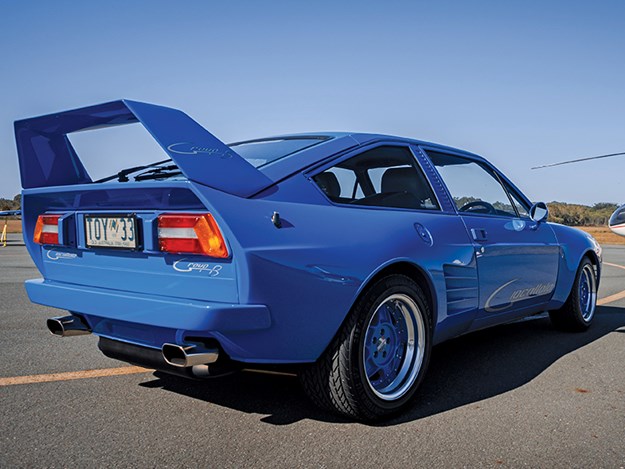
Halstead sought the help of his mate, former McLaren F1 race engineer Barry Lock, and planned on building the car Alfa should have, sourcing Sprint bodies, Busso V6s, and ZF transaxles from Alfa. However, this was when the hurdles began appearing as Alfa wasn’t keen on being shown up by some Australian upstart car dealer. They instructed dealers not to supply Halstead with cars, bodies or engines. Undeterred, Halstead began importing road-ready Sprints from New Zealand.
It might seem mad to import complete vehicles to strip and rebuild them, but it had its advantages. The Sprints had already passed Australian Design Rules (ADRs) that would have been costly to validate on a ground-up new vehicle build, so many of the already complied parts were kept on the finished Giocattolos.
| Read next: Giocattolo - Aussie super car
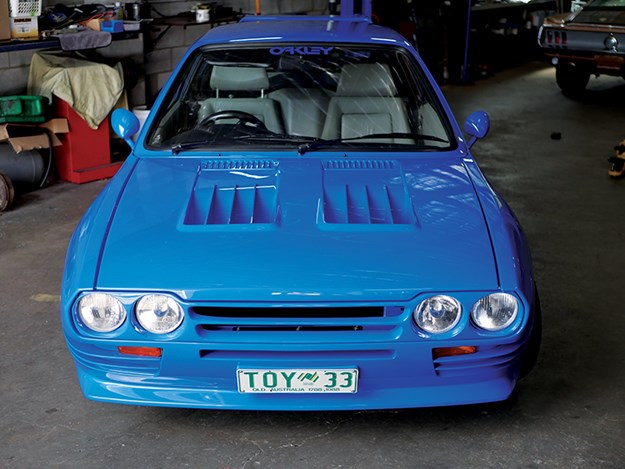
A lot of the body is Kevlar
Halstead and Lock had their work cut out to create a mid-engine rocket ship from a front-engine, front-wheel-drive Sprint. With no Alfa V6s available, Halstead reached out to the recently founded HSV. Holden’s engine division was looking at the export market for their Walkinshaw tuned 5.0-litre V8s and saw the Giocattolo as an overseas promotional opportunity.
Barry’s engineering prowess saw him overcome the myriad issues to shoehorn the 5.0lt into the rear of the Sprint. The engine used a bespoke twin throttle body and intake plenum set up and pumped out 300bhp. The front suspension was left stock apart from revised mounting points. However, the custom-made independent rear suspension had lower wishbones off an aluminium cradle attached to the ZF transaxle housing.

The Giocattolo ran Brembo brakes all round and rode on 15x8-inch front and 15x10 rear Simmons wheels. The kevlar body panels accentuated guards and body lines giving it a new look. Kevlar in road cars was unheard of in the ’80s however it featured extensively throughout the Giocattolo, including a Kevlar composite rear bulkhead giving the car enormous torsional rigidity. The result was a lightweight mid-engine sports car with the same power as a Ferrari 348 but 300kg lighter at 1100kg. With zero to 100 in under five seconds and a top speed of 260km/h, it was a pretty good effort for a small operation out of a Queensland beach town.
The Giocattolo was launched with former F1 world champion Alan Jones breaking the lap record at Lakeside at a press day. One Giocattolo was even dolled up in Qld Police lights and decals as a PR stunt to imply the Police were considering them as an option.
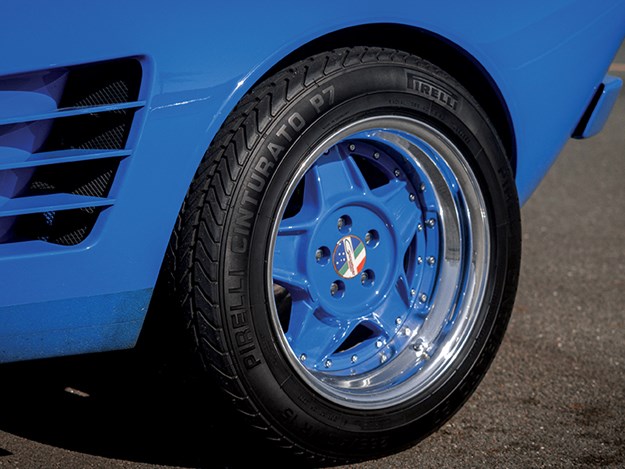
With Holden on board, financial backing from the Queensland Industry Development Commission (QIDC) and the Kilcoy Holding pastoral company, things looked pretty positive. However, the price of the Giocattollo was skyrocketing due to ditching the V6 for a V8 and the use of high-end materials like carbon fibre and Kevlar. The ZF transaxle dealt the most significant blow, being imported from Germany and stung with heavy taxes the landed price was a whopping $30k each.
This resulted in Giocattolo being around $90k, a far cry from the affordable concept envisioned. The high price coupled with the 1987 stock market crash, the "recession Australia had to have," and soaring interest rates saw the customer base for unproven wild V8-powered supercars evaporate. The final nail in the coffin came after only two late payments to the QIDC. Time was called on the Giocattolo operation on July 6, 1989, with the QIDC taking possession of the premises and locking the doors.
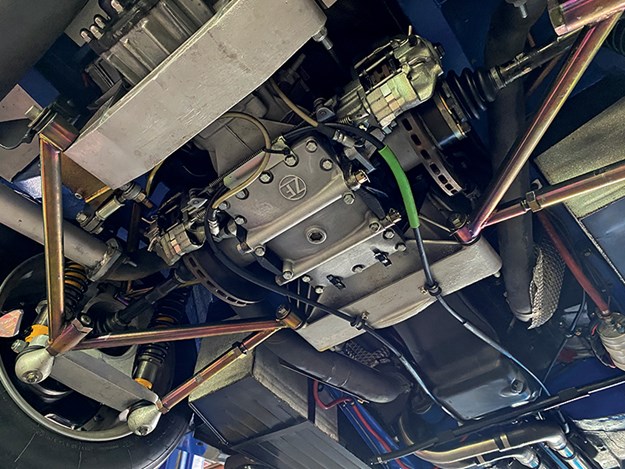
In the end, 15 road-going Giocattolos and three prototypes were produced; they were a marvel of Aussie ingenuity and arguably an engineering masterpiece. There are believed to be 13 Giocattolos still in existence and one unaccounted for.
One of the remaining Giocattolos still lives a stone’s throw from where they were manufactured in Caloundra. Build number three is a semi-permanent feature at Sports Classic Garage, with the proprietor and head mechanic Russell Clarke regularly working on it. Belonging to one of Russell’s customers, build number three spends a lot of time in Russell’s hands, and he has become somewhat of a mild-mannered expert on these mighty Sunny Coast supercars.
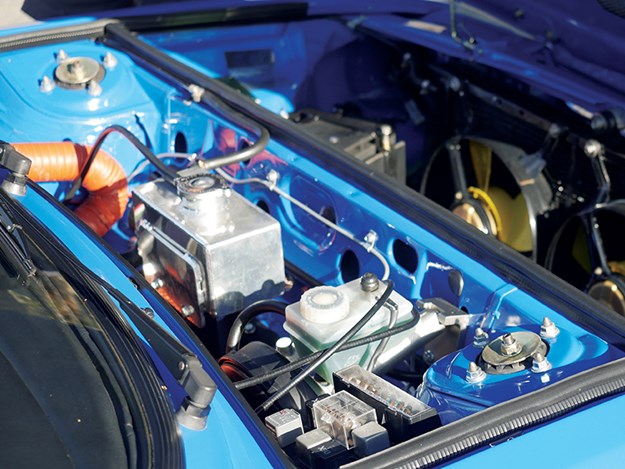
Everything is a snug fit
"The owner leaves me in charge of the mechanical aspects of the car and making sure it runs well, but also anything else that might crop up along the way when owning a vehicle as unique as this."
Russell began working on the Giacattolo build number three when the current owner picked it up in 2016 and has managed to get up close and personal with many of the other existing vehicles. At one point in 2017, he had nine of them at his workshop for the Giocattolo reunion organised through the Giocattolo – The Supercar from Caloundra Facebook group.
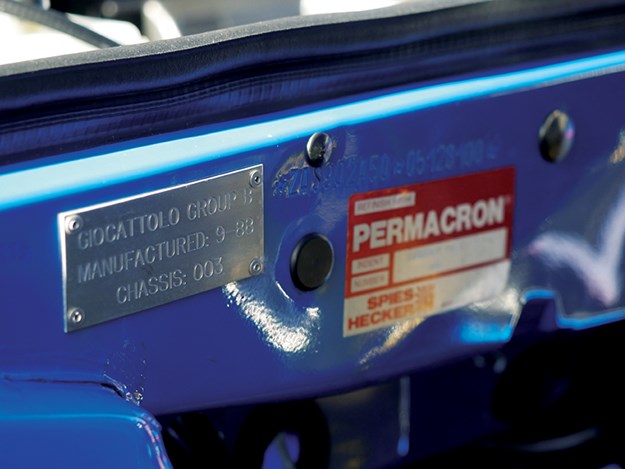
This one is build number 003
Russell’s keen to point out the sheer magnitude of bringing such a vision as the Giocattolo to life. "A lot of local engineering, construction, and fabrication of parts took place for the car. The car’s interior was created locally with upholsterers and various body craftsmen, designing and building bits and pieces, a fairly incredible little story for a beachside town to have what is the equivalent of a supercar if you like."
Although this particular Giocattolo is stamped number three, Russell quickly pointed out that it does not necessarily mean it was third off the assembly line. With several cars being constructed simultaneously, they didn’t roll out the door in sequence; Russell laughed, "I’ve had number four car here, which I’m pretty sure was built before this car."
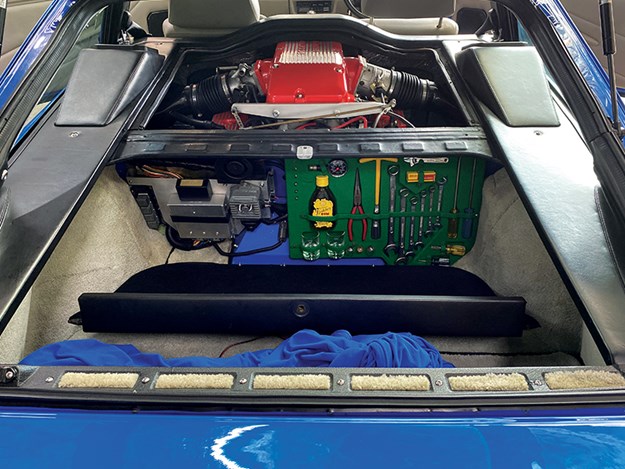
Of the Giocattalos that Russell knows of, many are in varying presentation levels; from mostly original to heavily modified LS swapped, you name it. This example was purchased in 2016 in original condition and with reasonably low kilometres. Then basically pulled apart, cleaned, replated, and put back together to bring it back up to an as-new condition or, as Russell puts it, "possibly slightly better than new."
Since then, it has been driven and enjoyed with a healthy 15,000 km added to the dial. With that have come routine maintenance and the desire for more power.
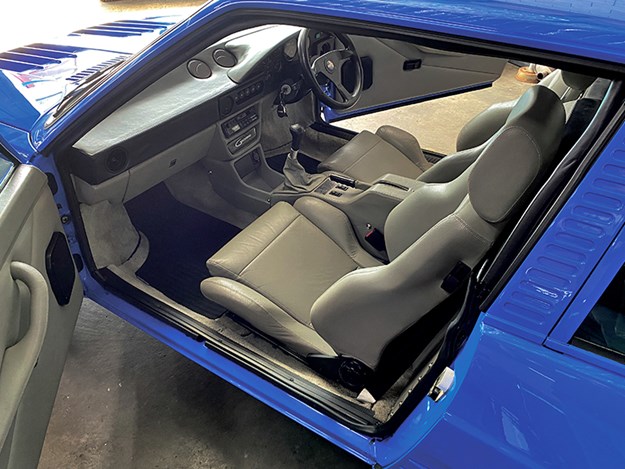
The interior is very luxurious
Any Giocattolo aficionado, try saying that after a few drinks, will note that the Giocattalos came out with wheels colour coded to the car. Russell said the current owner is playing around with alternative rims to "do something to make the car look a bit different."
Russell knows the car back to front and can almost tell you which nut and bolt are original or replaced. "The body is original as you see it, most of the paint is original, bar a little bit of an altercation to the nose cone, which required it to be repainted, with the rest of the car as it was. The interior is totally original, and none of the running gear has been changed. We did rebuild the engine about five years ago, upgraded the cylinder heads, upped the compressions ratio, and put in a larger cam".
.jpg)
With those upgrades, Russell reckons it’s good for north of 230kW, much more than the original VL Group A specs of around 180kW. There is a new muffler in the works; the current setup is robbing the car of 30hp at the wheels; Russell did discuss what would go into chasing 300kW.
"The exhaust system is quite restrictive, and we’ve maintained a conservative tune and rev limit on the engine. If we were to pull the engine apart again and put special pistons and conrods in it, allowing higher rpm, say 7500 to 8000, you’d have over 300 kilowatts fairly easily."
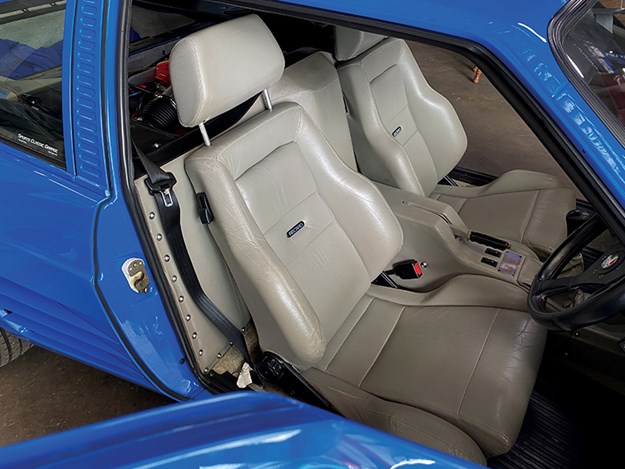
Russell’s idea of keeping it quite conservative still equates to a visceral driving experience, and with all that engine behind you, there is a lot to take in. "It’s quite an incredible experience to drive compared to an average run-of-the-mill car. You know it’s got some power, and the noise in the car is an interesting experience," Russell said.
"The first time I went in the car, I actually drove it. I wasn’t a passenger. My first impression was, oh my god, what is this? You could hear everything the engine was doing. You can hear the gearbox, the differential, you’ve got all this noise happening, and you think you’ve gotta be kidding, but after you drive for a few minutes and settle into it, you get the hang of it and start to become comfortable. It’s entertaining to drive."
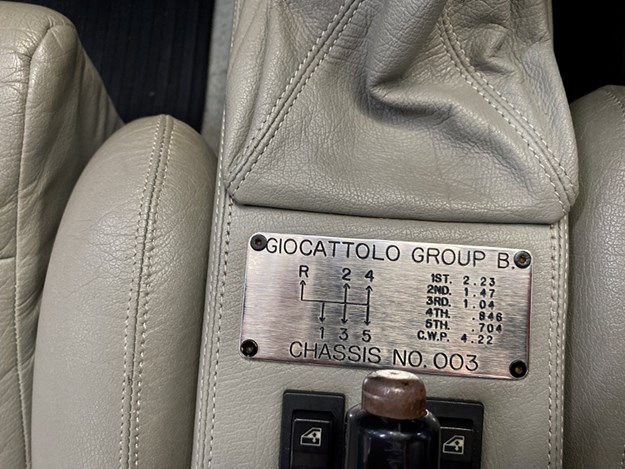
To appreciate Russell’s fine work and ever-increasing knowledge base of the Giocattolo, the owner kindly arranged to make up a "Giocattolo Official Service Centre" sign. Russell loves the sign but laughed and said, "Do I really need to have more Giocattolos in here? I’m quite happy to work on one or two of them, but I dunno if I want a hoard of them here."
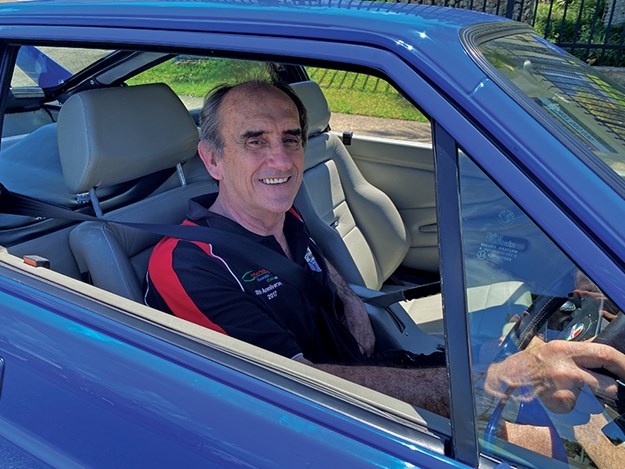
Russell Clarke fettles the Giocattolo for its owner
1988 Giocattolo (Build number 03)
NUMBER BUILT: 18
BODY: Two-door coupe
ENGINE: 5000cc V8
POWER & TORQUE: 180kW / 390Nm
PERFORMANCE: Top speed 260 km/h
TRANSMISSION: ZF five-speed manual
SUSPENSION: McPherson strut (f)dependent with coil springs (f) independent with coil springs (r).
BRAKES: Disc (f) disc (r) power assisted
From Unique Cars #475, February 2023
Unique Cars magazine Value Guides
Sell your car for free right here
Get your monthly fix of news, reviews and stories on the greatest cars and minds in the automotive world.
Subscribe

.jpg)







